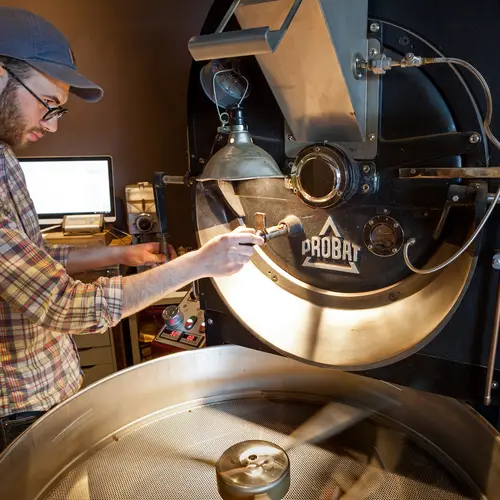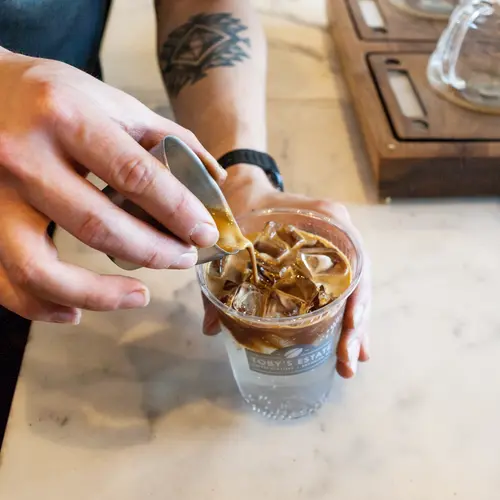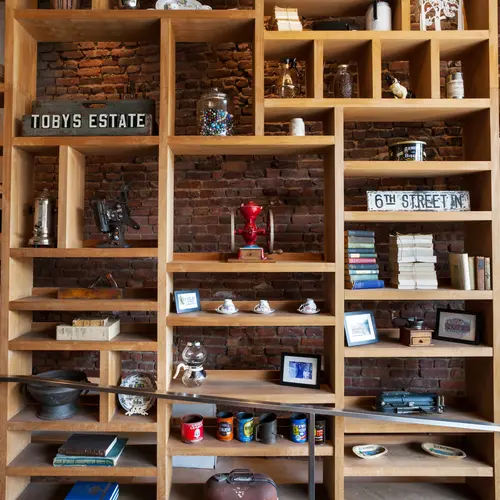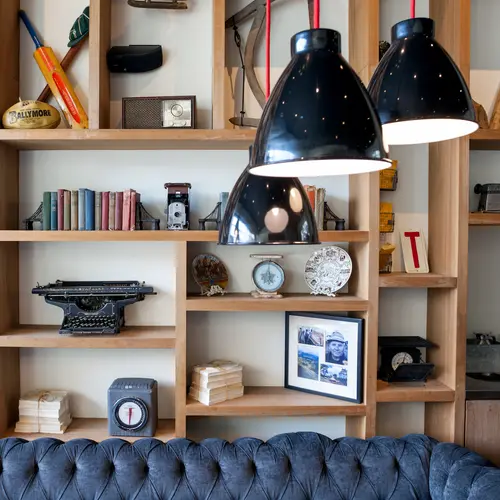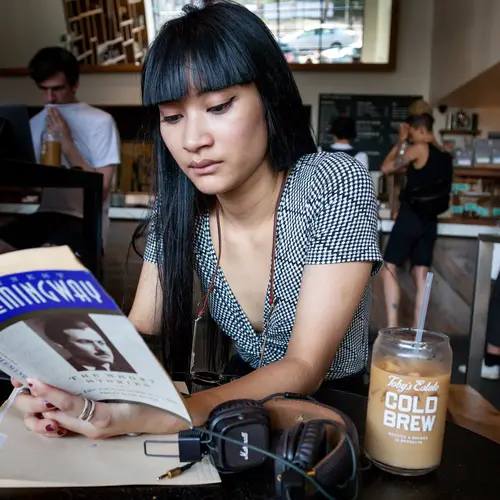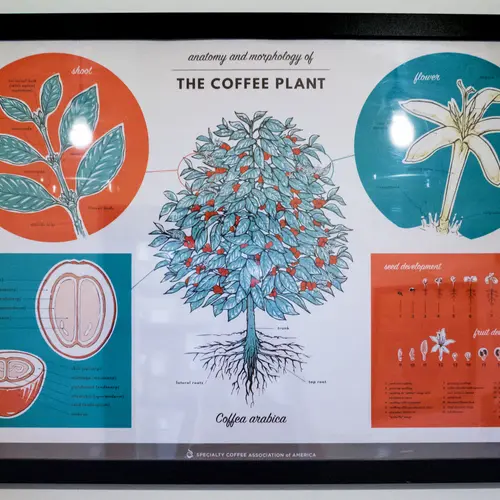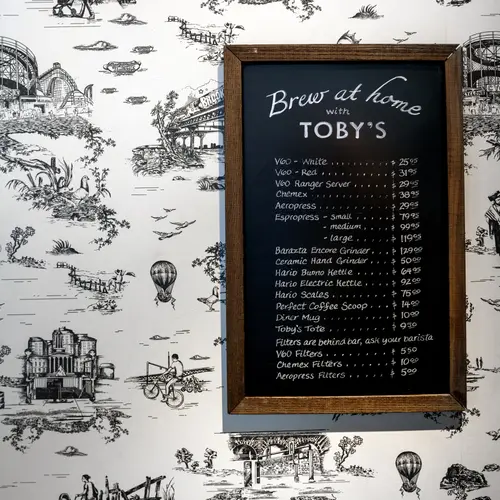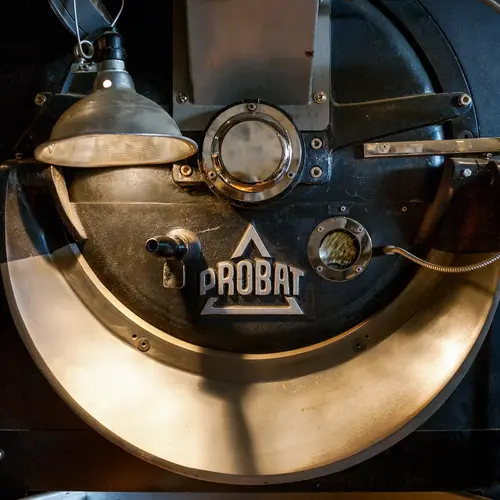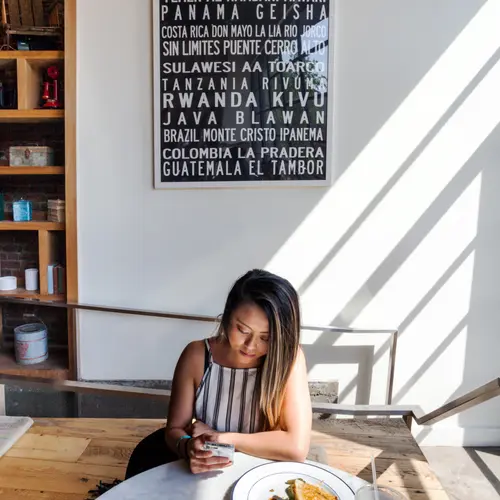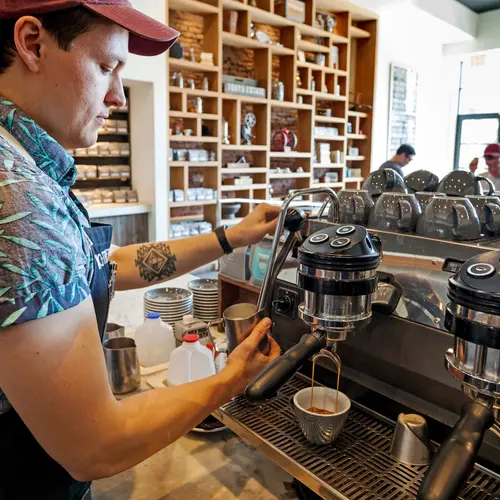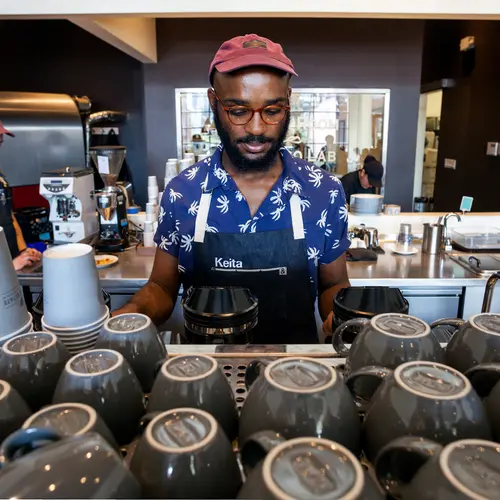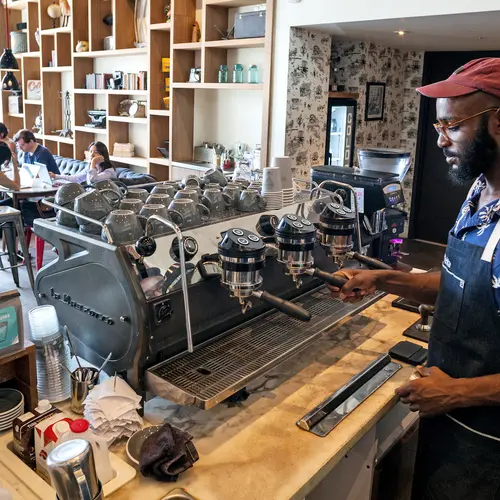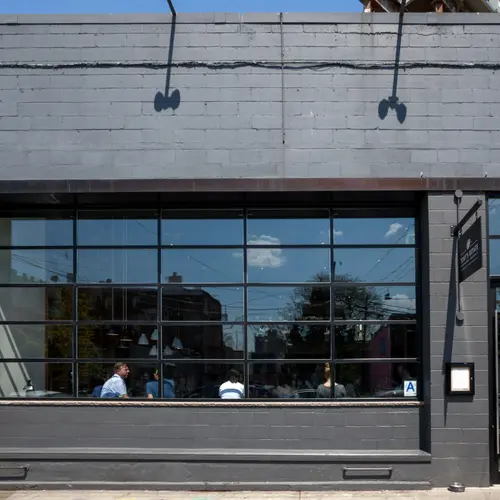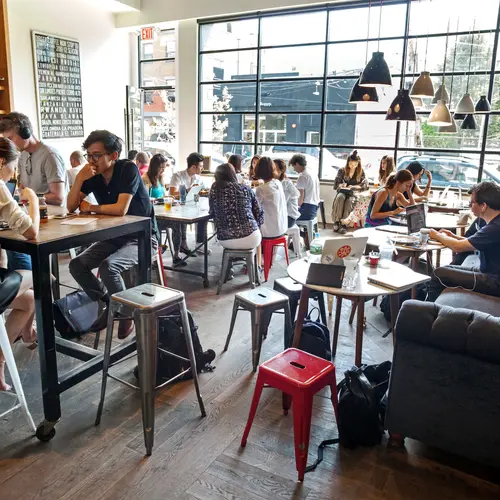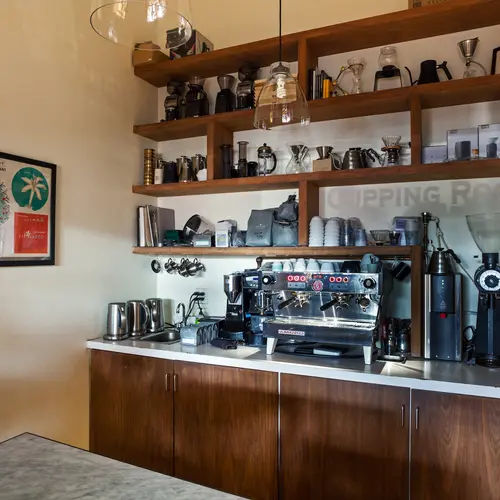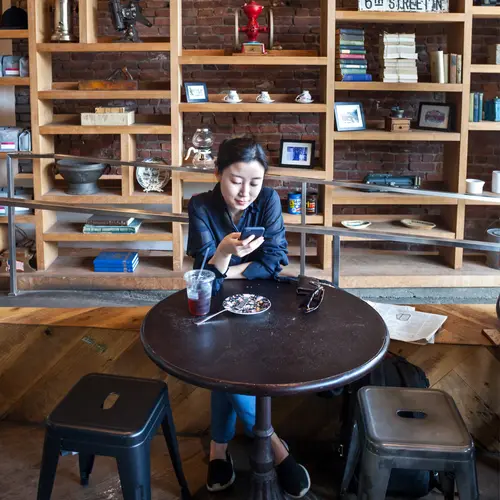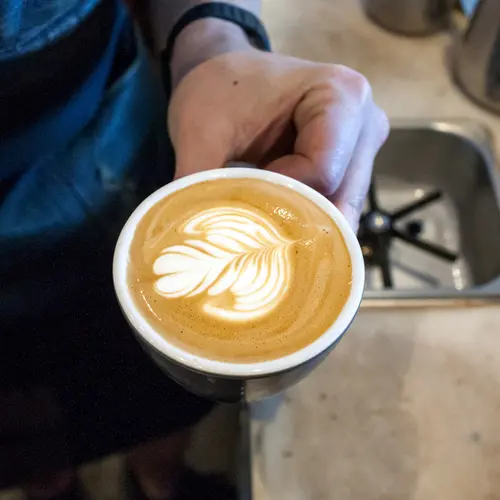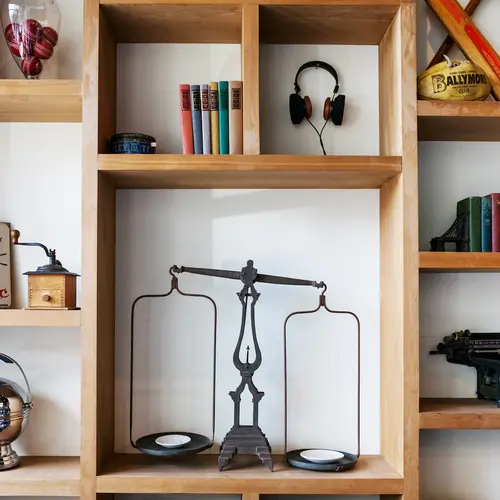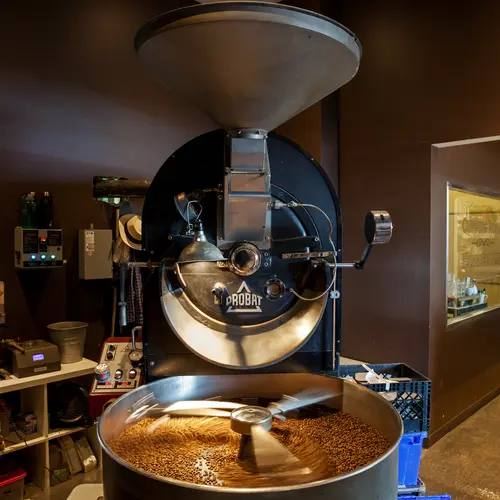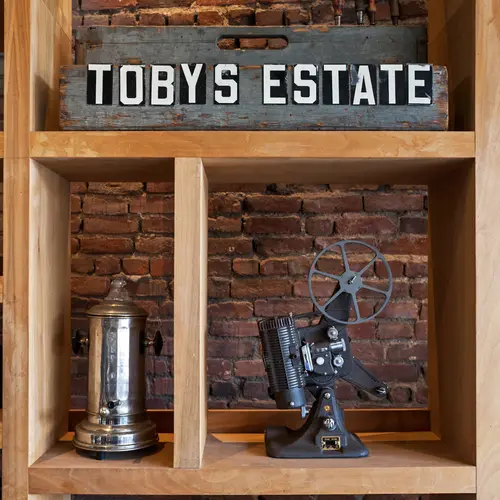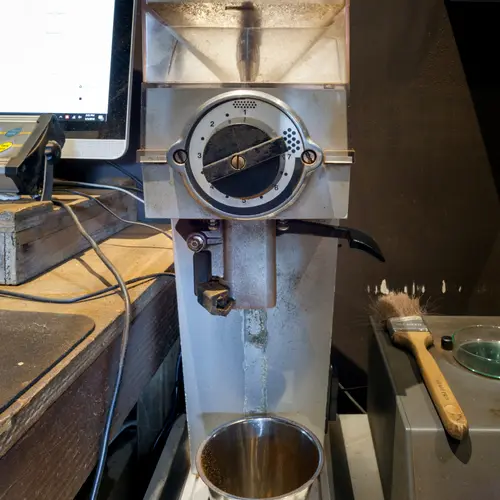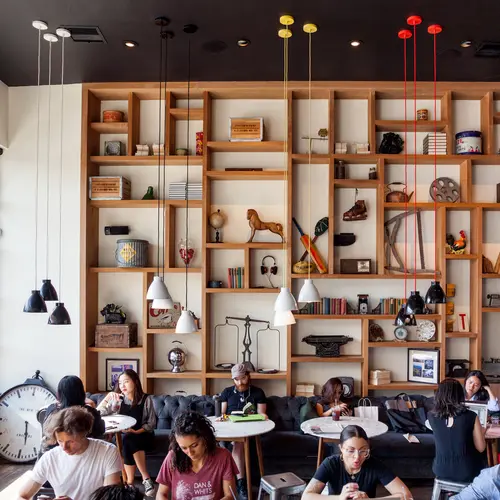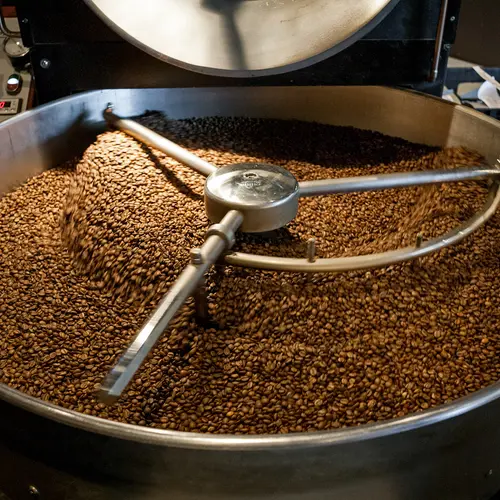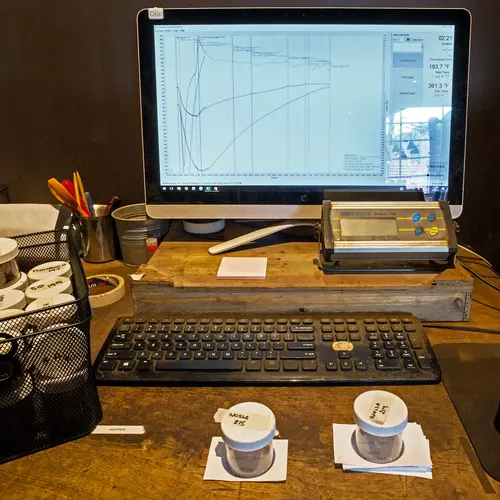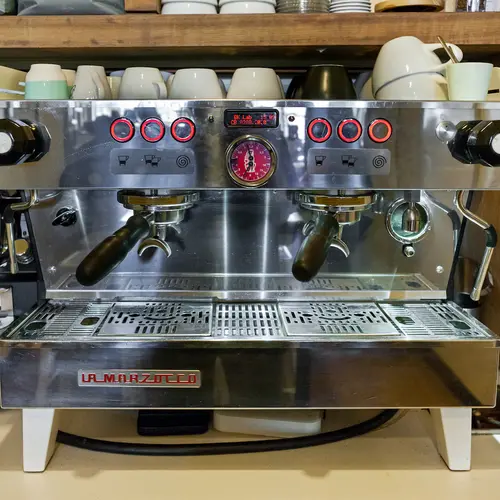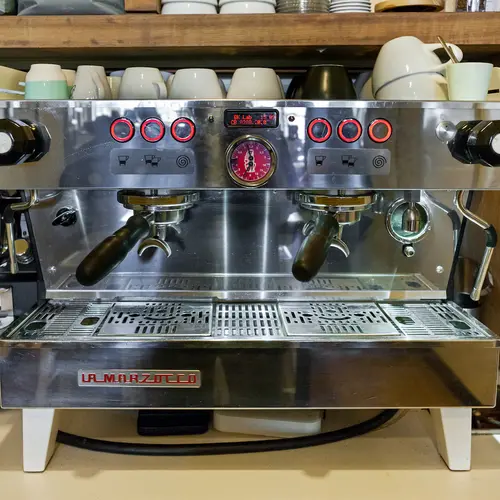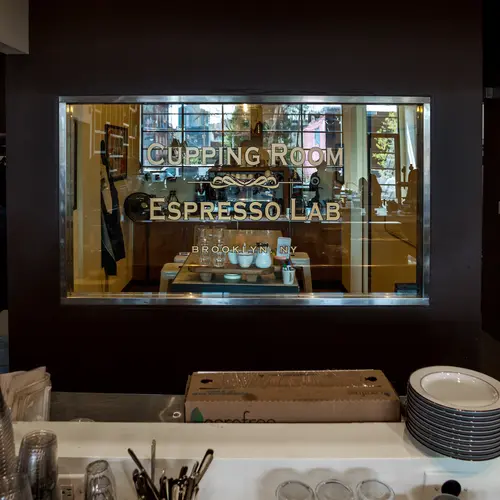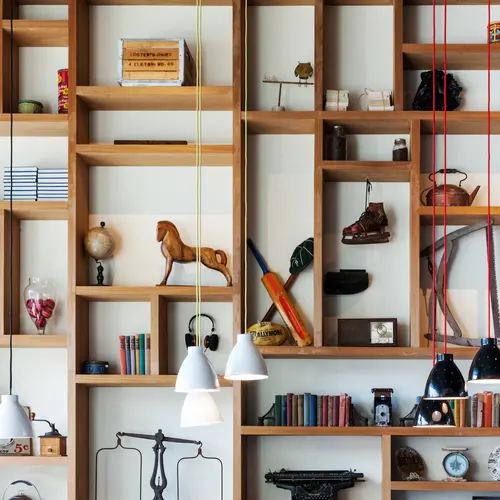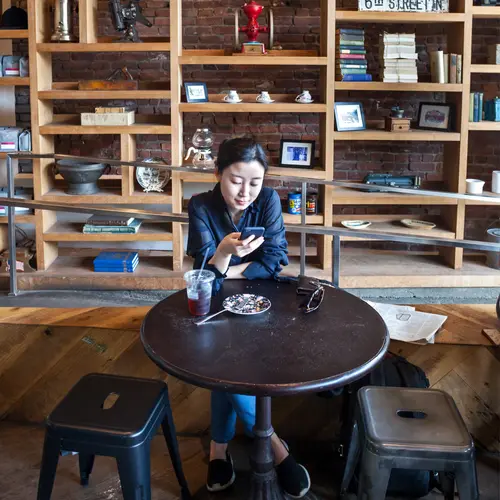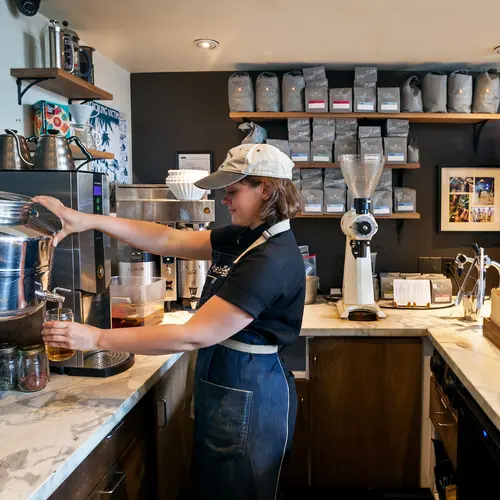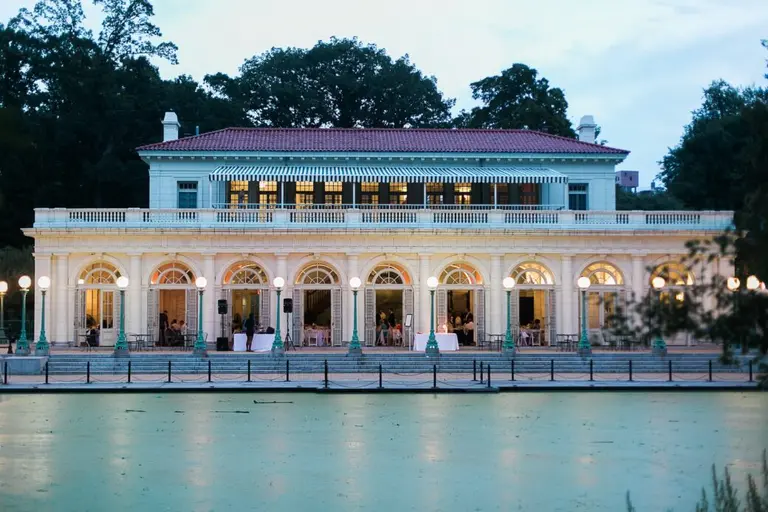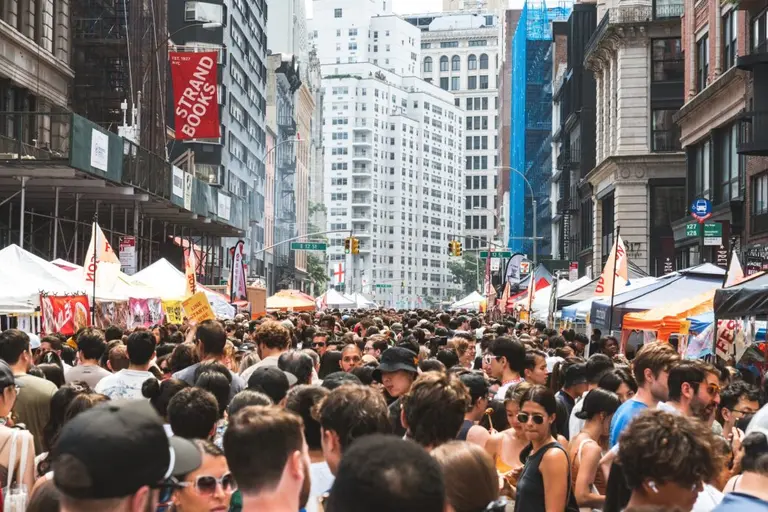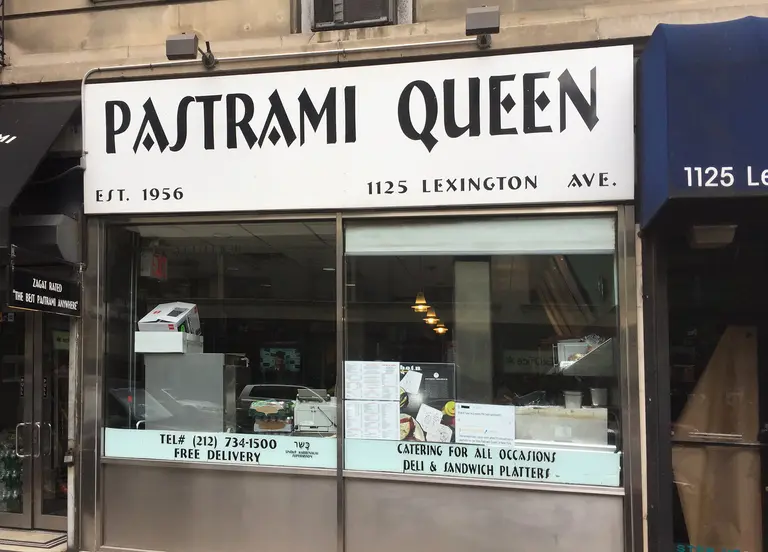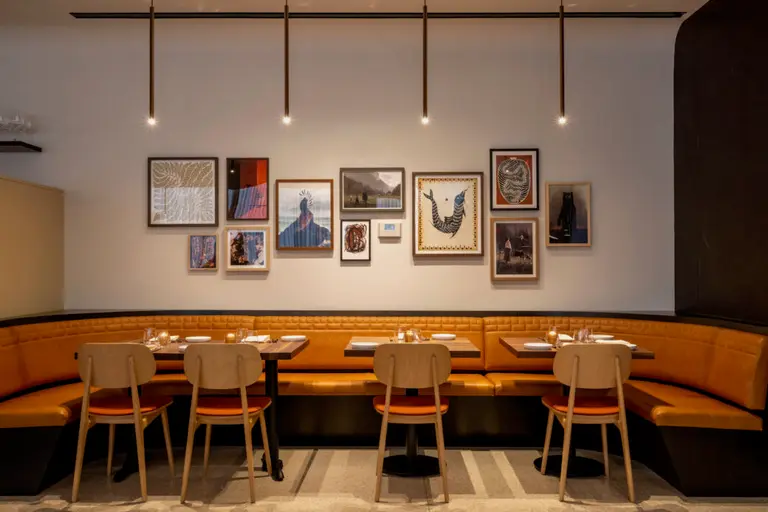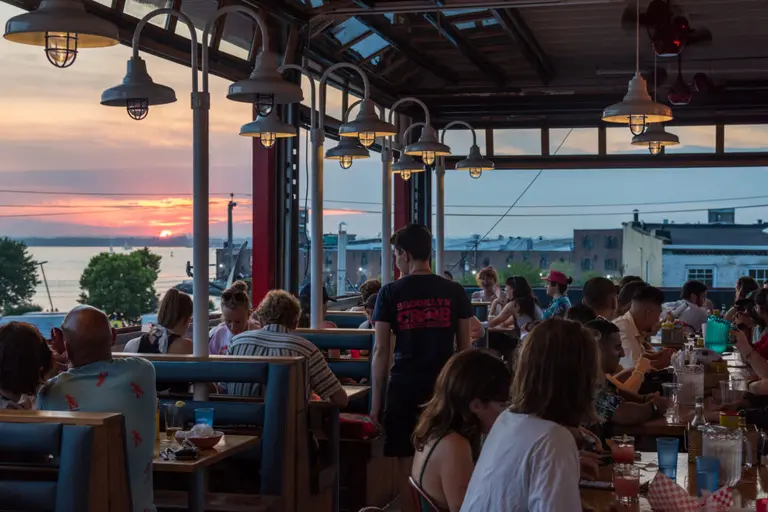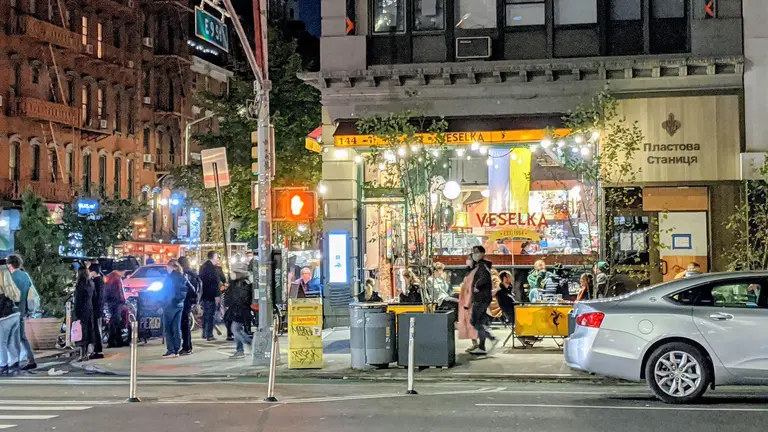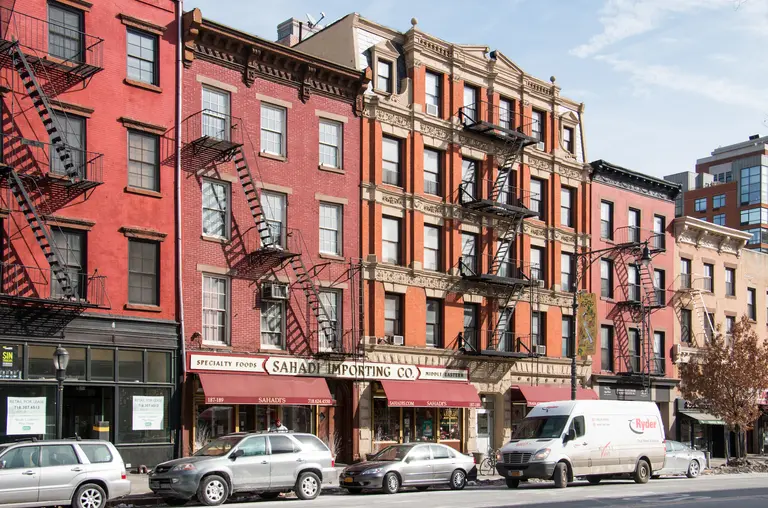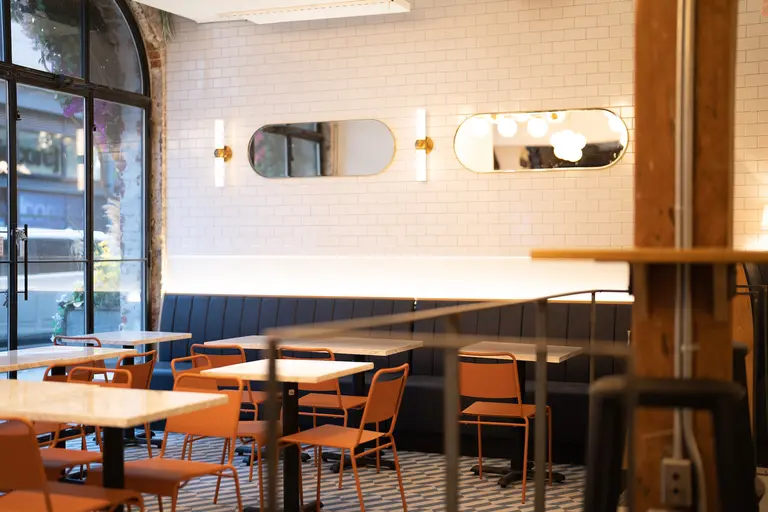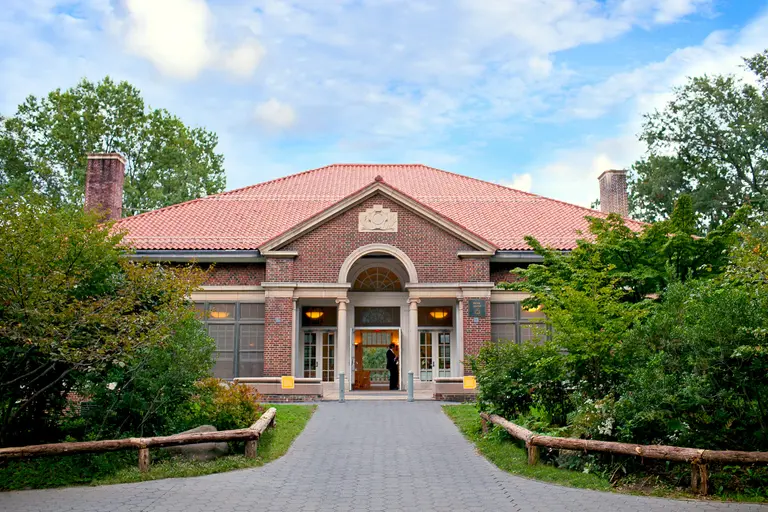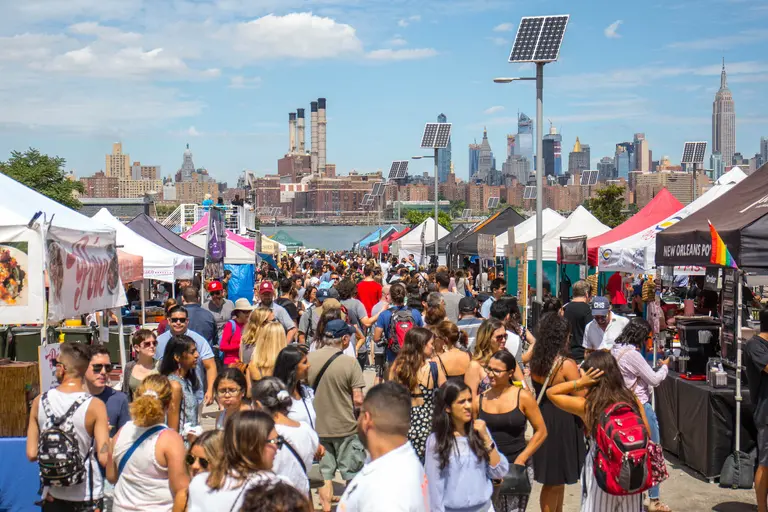Roast, record, repeat: How Toby’s Estate brews the perfect cup of coffee at its Brooklyn cafe and roastery
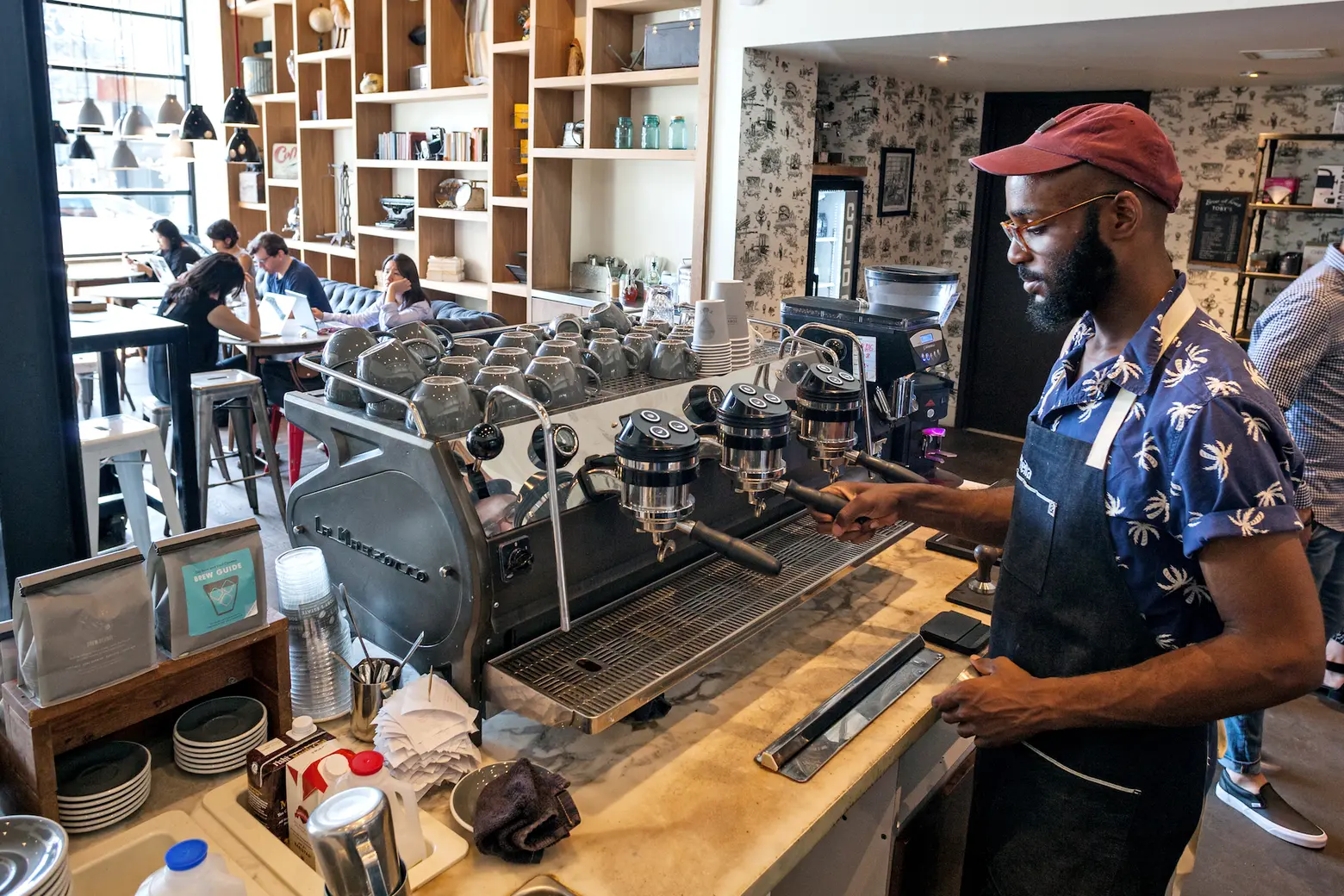
6sqft’s series “Where I Work” takes us into the studios, offices, and off-beat workspaces of New Yorkers across the city. In this installment, we’re touring the Williamsburg cafe and roastery of Toby’s Estate Coffee. Want to see your business featured here? Get in touch!
When you walk into Toby’s Estate Coffee, the smell of freshly brewed coffee hits you immediately. And thanks to the towering roasting machine in the back of the Williamsburg coffee shop (which roasts about 50 lbs of coffee at a time), the sweet-bitter aroma really lingers. While the location on North 6th Street between Berry Street and Bedford Avenue was the first Toby’s in New York City, the coffee connoisseurs have since sprouted to other boroughs, with three cafes in Manhattan and most recently one in Long Island City.
Toby’s, which originated in Australia, has served up specialty small-batch coffee in NYC since 2012, bringing in some eclectic flavors to their roster of roasts. Currently, the shop is offering a Citron Espresso Tonic, with tonic water, ice, handmade citron simple syrup and candied oranges. (We tried it. It was delicious.) On an unseasonably warm day this spring, Toby’s gave 6sqft a tour of its Brooklyn shop, which boasts enough square footage to fit its roastery and cafe, as well as plenty of seating. Ahead, see inside the sunlight-filled flagship space and hear from Toby’s staff on their “roast, record, taste, adjust, and repeat” process that brews the perfect cup of coffee.
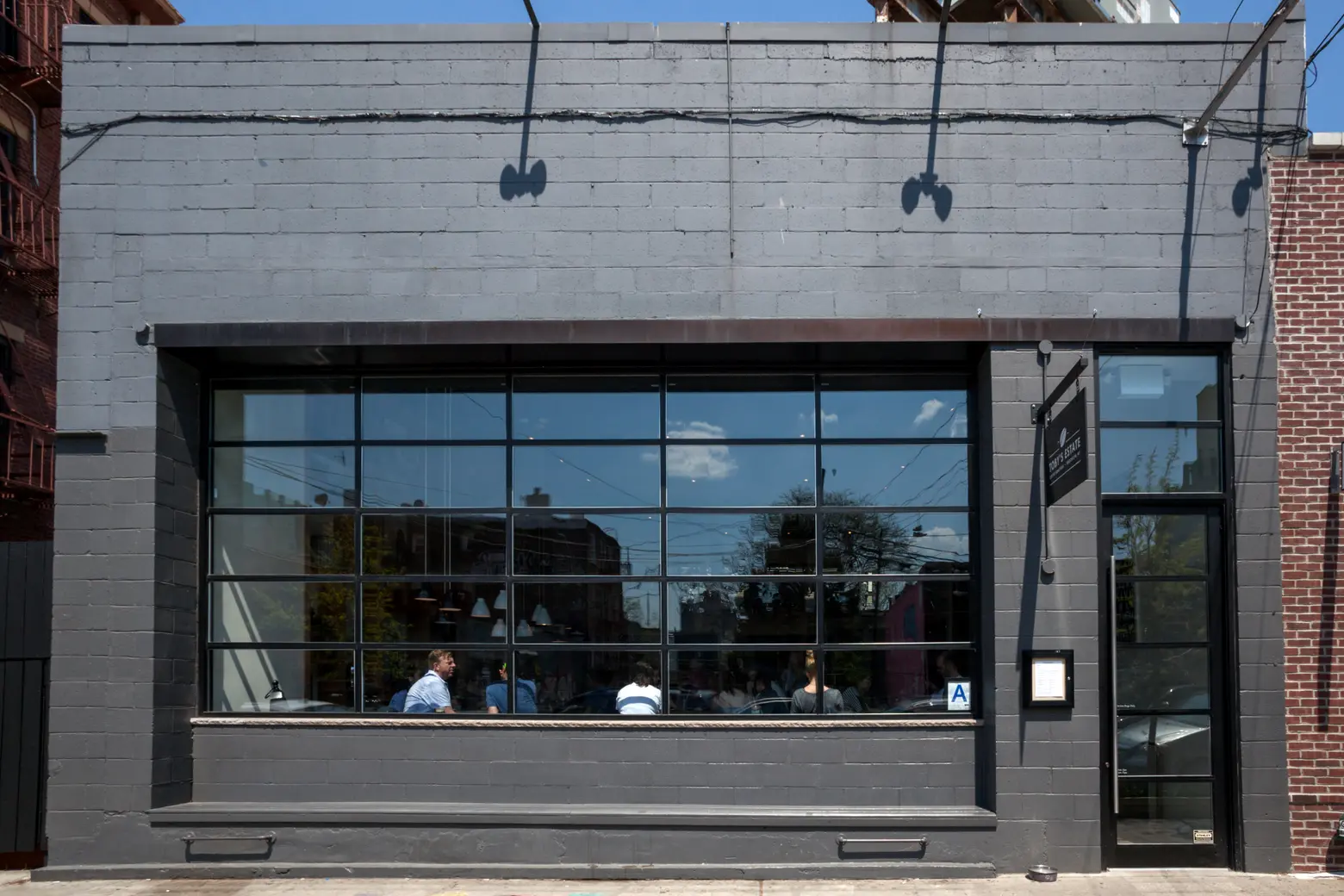
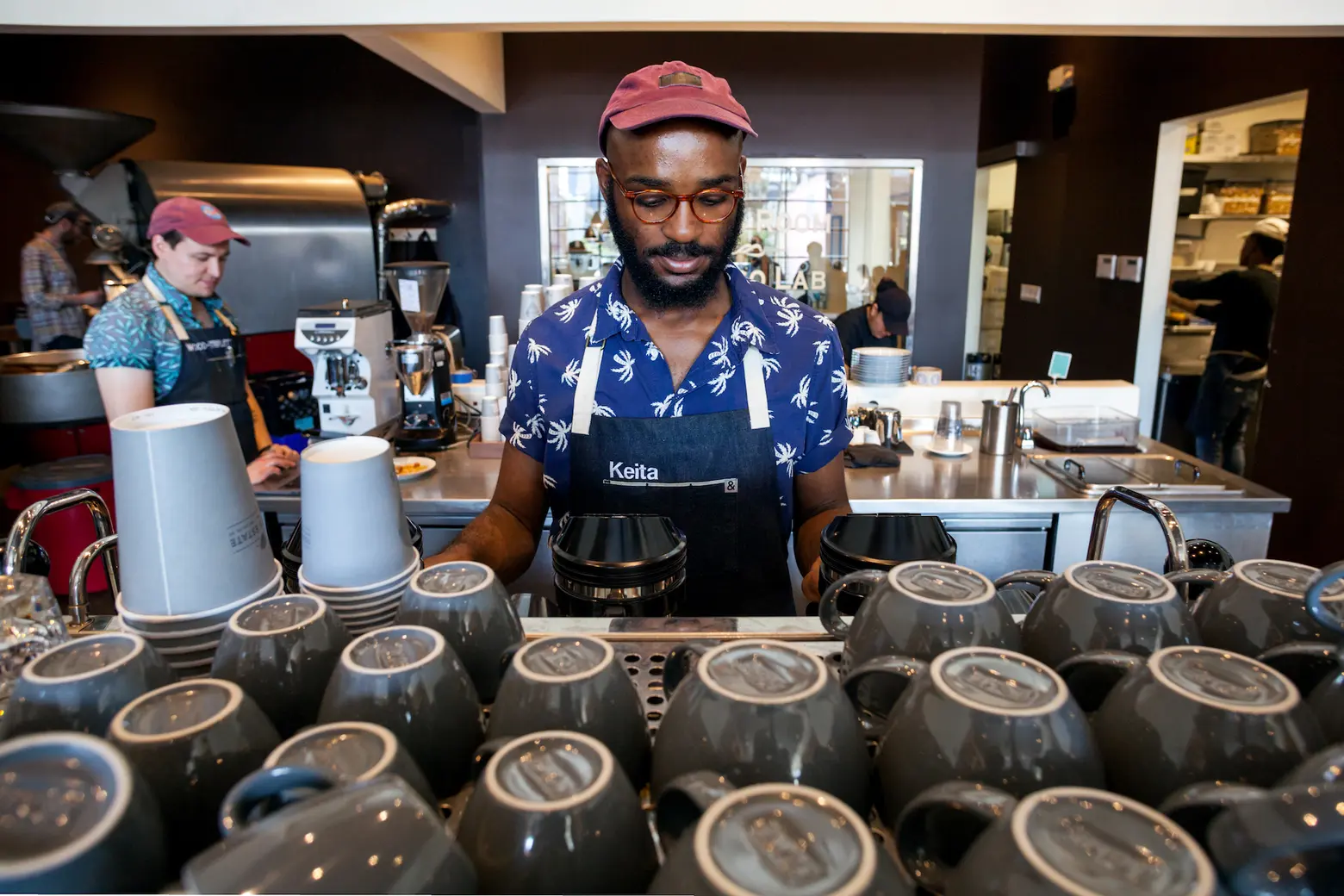
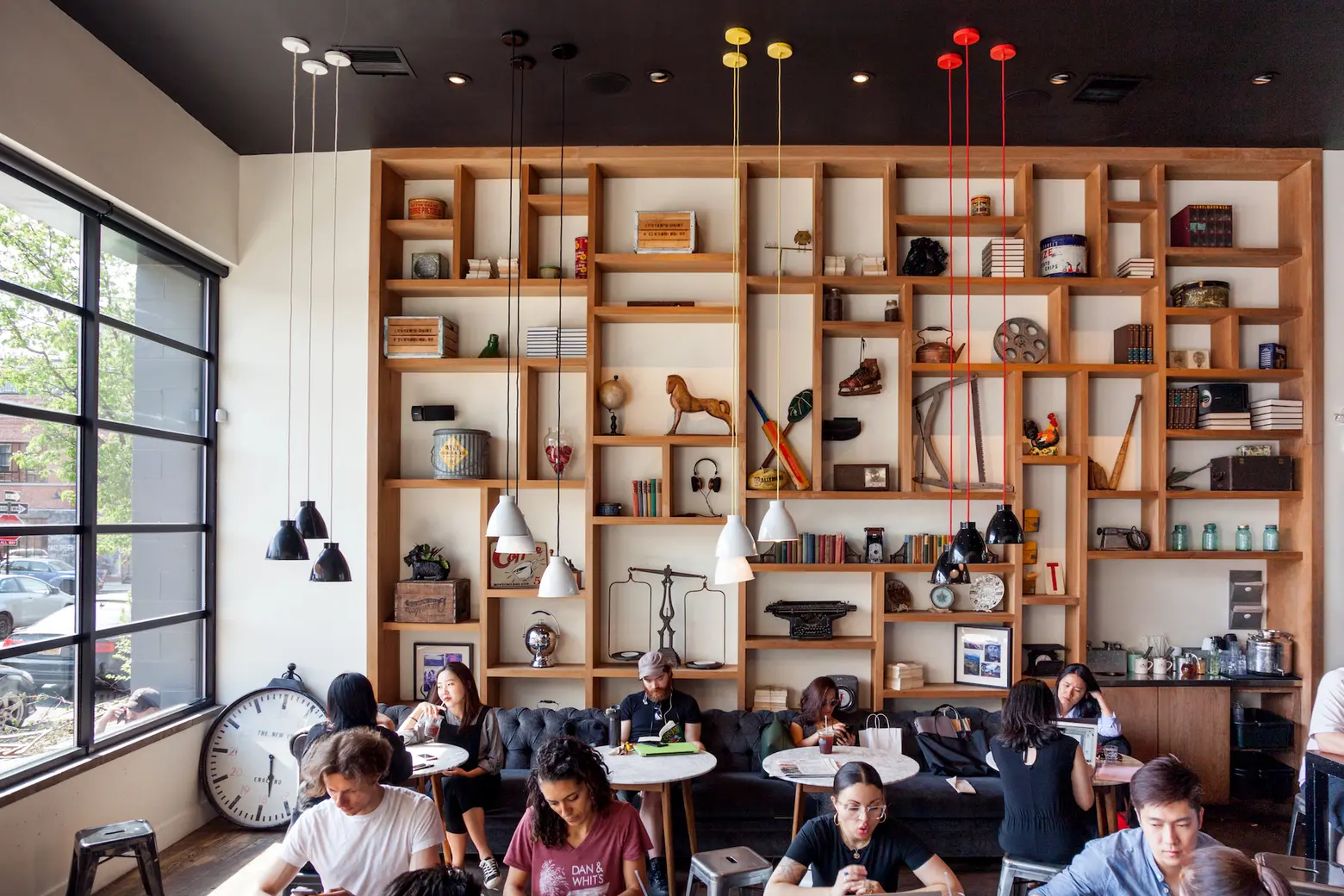
Can you tell me about the start of Toby’s and the general background of the company?
Toby’s Estate was founded by childhood friends Adam Boyd and Amber Jacobsen, who opened the flagship cafe and roastery in 2012 on a then-deserted stretch of North 6th Street in Williamsburg.
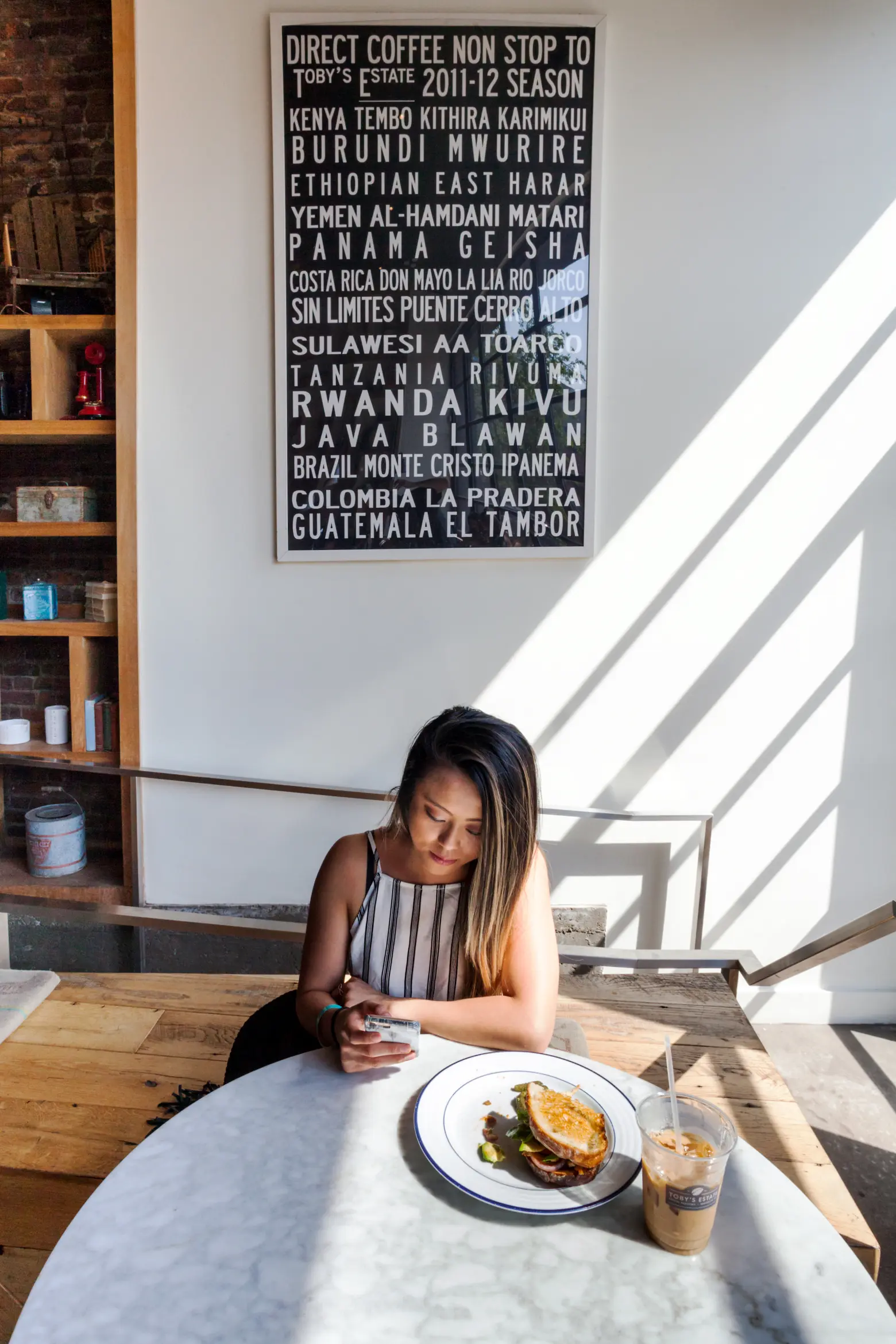
How did it make its way from Australia to Brooklyn?
Adam and Amber wanted to open a small batch roastery in New York because they felt that specialty coffee was underserved here.
And specifically, how did Toby’s land in the Brooklyn neighborhood of Williamsburg?
Adam felt that Williamsburg would be the perfect location, close to the city but far enough away that you can have a 3,500 sqft roastery that was affordable, he believed it was going to be the next great place to be. So when the lease was signed, the street was empty.
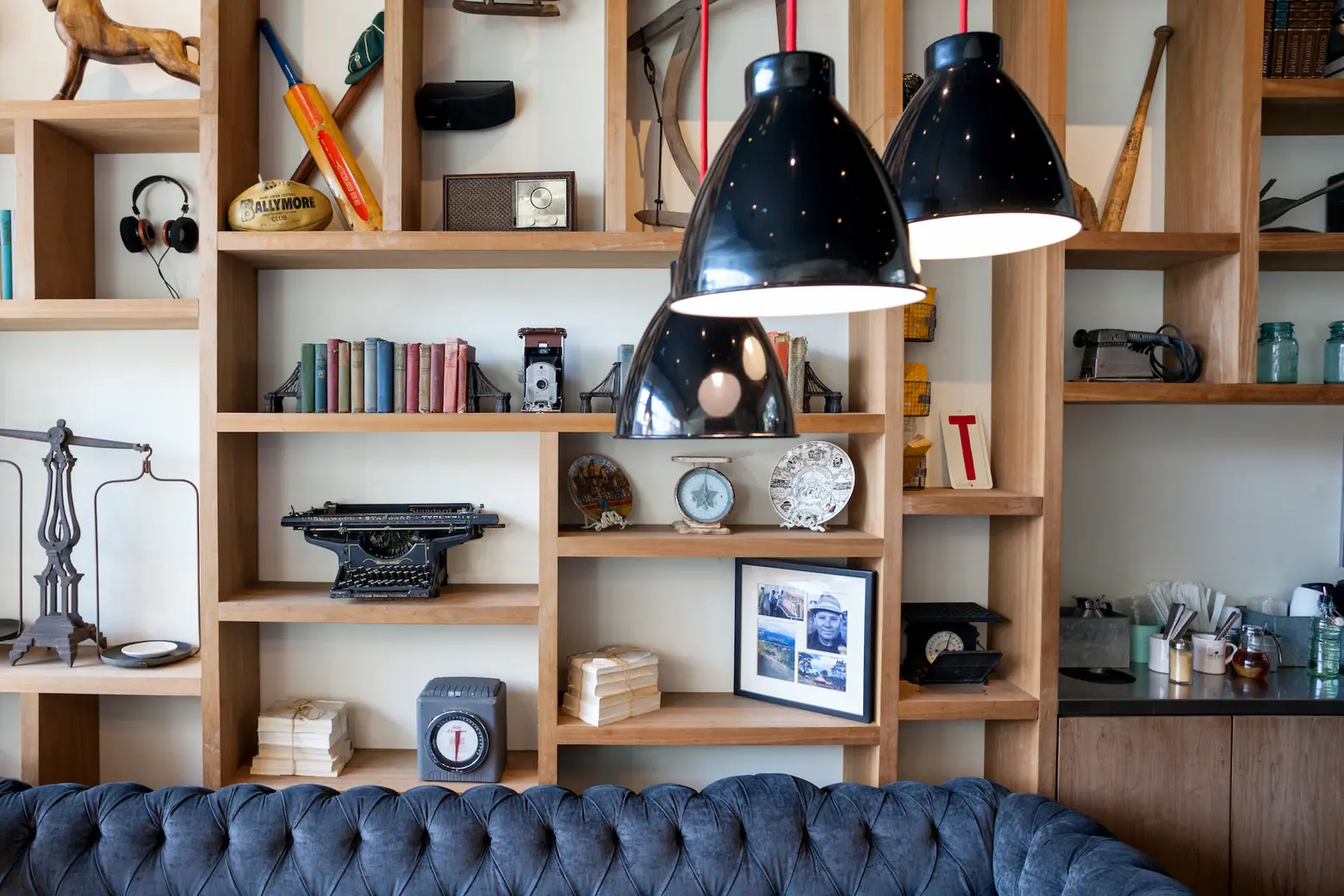
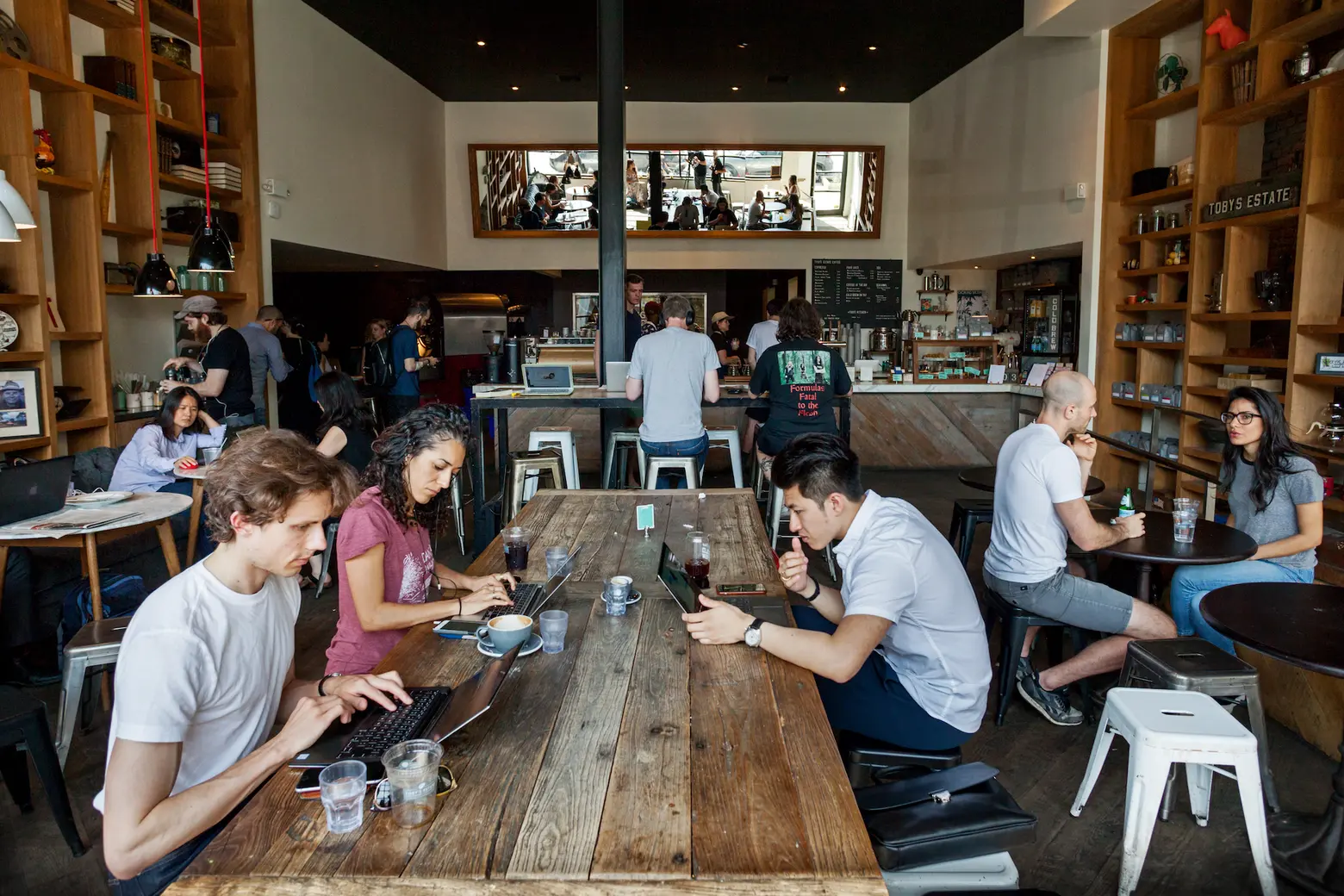
How did you figure out how you wanted to design and set up the store?
Amber Jacobson (co-founder): We wanted to make coffee accessible so we told our designers that we wanted our customers to see what we are doing and how we are doing it. That led to the roaster on show in the back of the space and our lab where we trial our coffees and train our staff visible to our customers.
We also wanted to emphasize the heart of the operation, our baristas, so we have them at the highest point and the walls gradually come in to focus on the bar, kind of like a DJ booth. Lastly, we wanted people to be able to enjoy our space with their pets, so we created a stoop right out front. We pushed the entire storefront back so people and their pets can enjoy the sunshine.
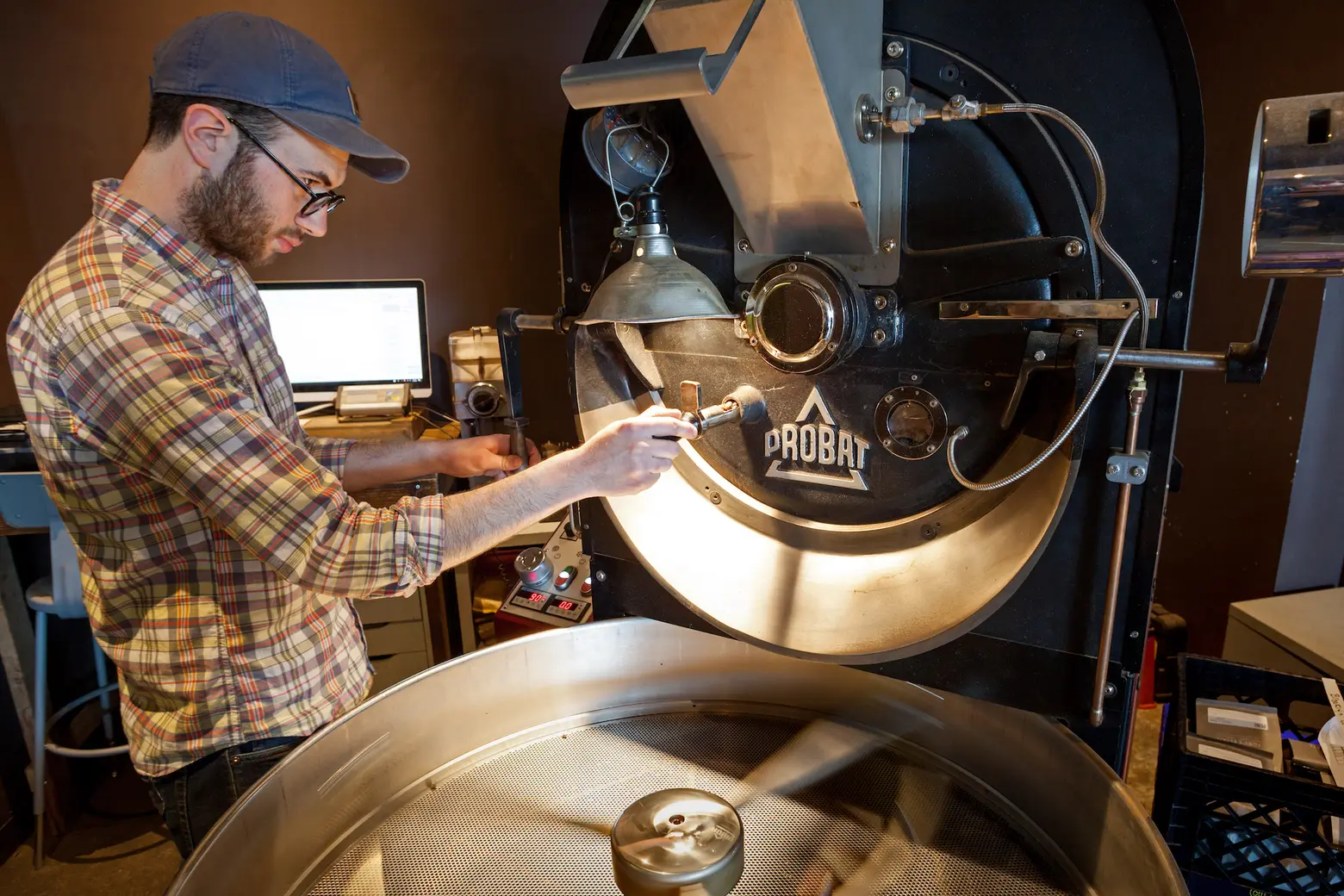
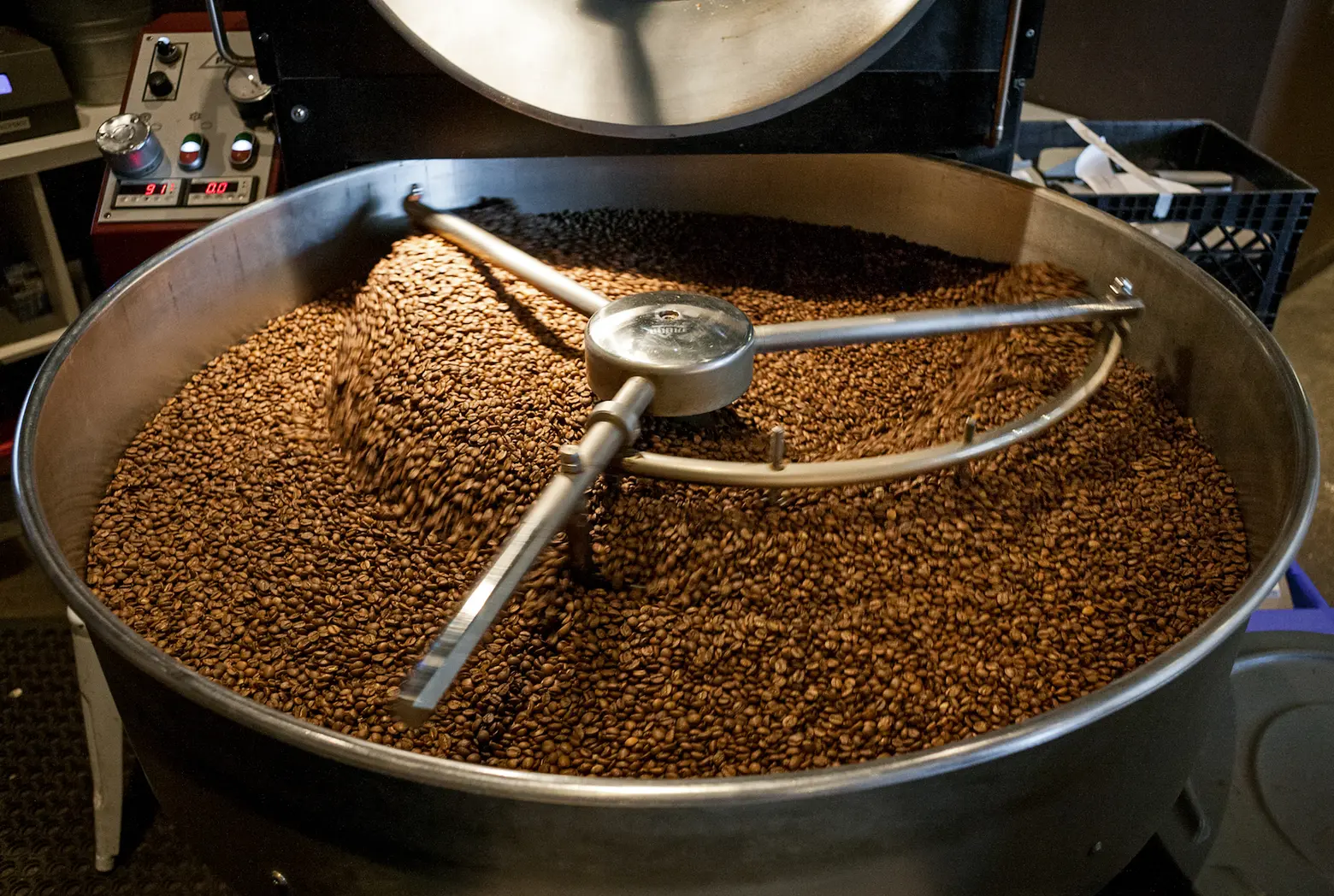
The Probat Roasting machine roasts about 50 lbs/ batch per day, with each batch taking between 12 & 15 minutes. The machine runs between 12 & 17 hours a day, roasting 60 batches or more than 3,000 lbs of coffee per day
Where do you source your beans from? And what does that process typically look like?
Green Coffee Buyer Jonathan Withers travels three months of the year to multiple regions within a dozen countries to build a diverse, highly seasonal menu. The coffees he purchases encompass the total range of flavor profiles possible in coffee from all over the globe. In our sourcing, we rely on discovering producers who share our values and are already producing stellar coffee. We work directly with them, on the ground and with a quality feedback loop, season after season/year after year which ensures perpetual improvements in quality and a reliable supply chain which grows the operation and quality of life improvements for all parties.
The process invariably begins on the cupping table. Whether sampling and tasting abroad or back home in our own lab, each year we cup thousands of samples from new potential sources. Sometimes we purchase these coffees & often not, but this first tasting begins further evaluation of the coffee’s source.
We give our results, ask to taste more, learn more about the source and the people behind each sample and potentially arrange to visit. From here each time is different but these starting steps have led us to some of our favorite coffees and people in the world. Rubén Dario’s juicy and tropical El Faldón in Colombia, Luiz Paolo’s almond and stonefruit Isidro Pereira in Brazil, Higinio Gomez’s black cherry and apple Las Moritas in Guatemala, Tesfaye Bekele’s peach rings and caramel Suke Quto in Ethiopia…
Can you briefly describe the roasting process that occurs on-site?
Jonathan Withers: Our approach to roasting coffee is centered on the idea that there is one perfect way to treat each individual coffee which perfectly expresses its sweetness, complexities, and provenance. Using a combination of skill, experience, and a wide assortment of carefully collected and analyzed data, we roast, record, taste, adjust, and repeat until it’s perfect. Once we know how best to treat a coffee, we continue to measure and collect data for every batch, perpetually comparing and tasting to ensure perfect consistency.
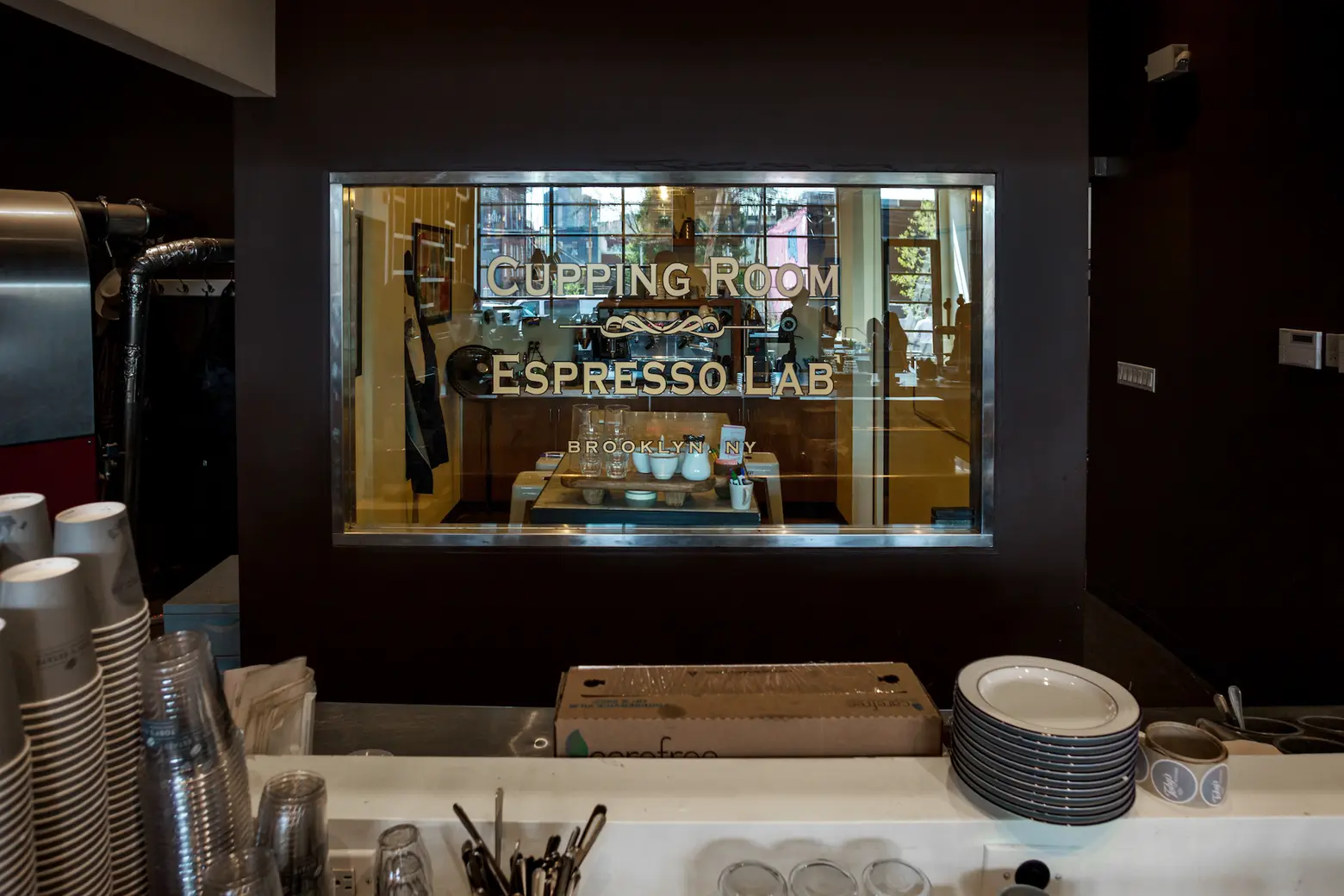
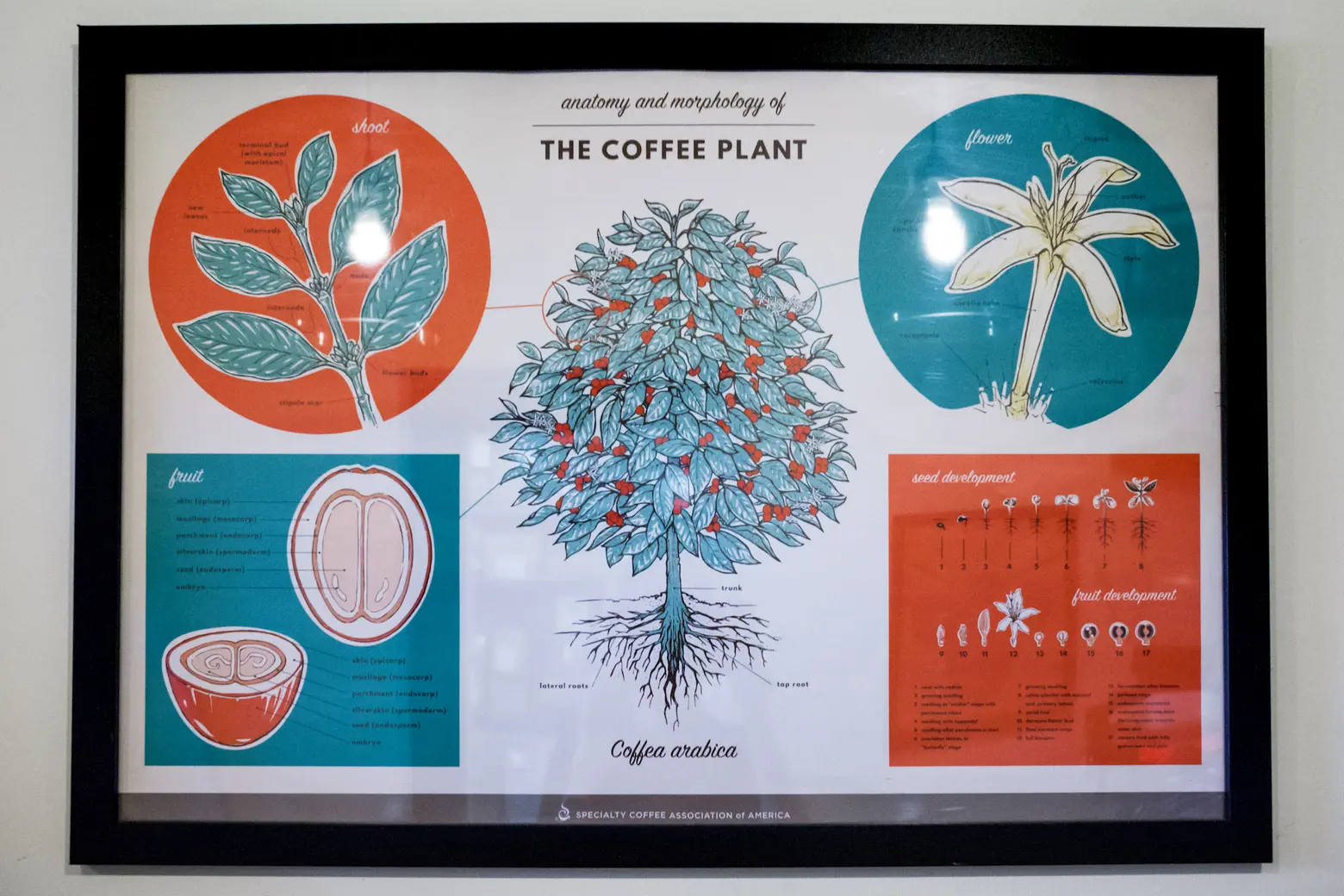
Learn more about Toby’s Brew School here
Toby’s puts an emphasis on educational programs for staff and consumers. Why is this so important and what are some of the benefits of this approach?
Allie Caran (Director of Education): Education is the most important resource for coffee lovers and baristas. Our approach is unique in the fact that we don’t just want to show people the steps to brew coffee, we want to make a platform for coffee education that demystifies the complexities of brewing and gives individuals the confidence to transform their coffee brewing rituals. We employ industry-leading Educators and offer a range of individually-curated classes in both our Brooklyn and West Village Cupping Lab. The classes are designed for coffee novices and experienced baristas alike and include offerings like Home Brew Methods, Home Espresso and Milk, Latte Art, Public and Private Cuppings, Espresso Extraction and classes for the more experienced, professional baristas.
We also offer a certification program for its baristas which is a series of classes that range from Seed to Cup, Brew Methods, Espresso Foundation, Advanced Espresso Applications and Milk Science. Upon completion, students are tested in both written and practical formats to assess their understanding, skills set and expertise in coffee. These educational offerings have the ability to completely transform a coffee job to a coffee career and ultimately a stronger coffee professional.
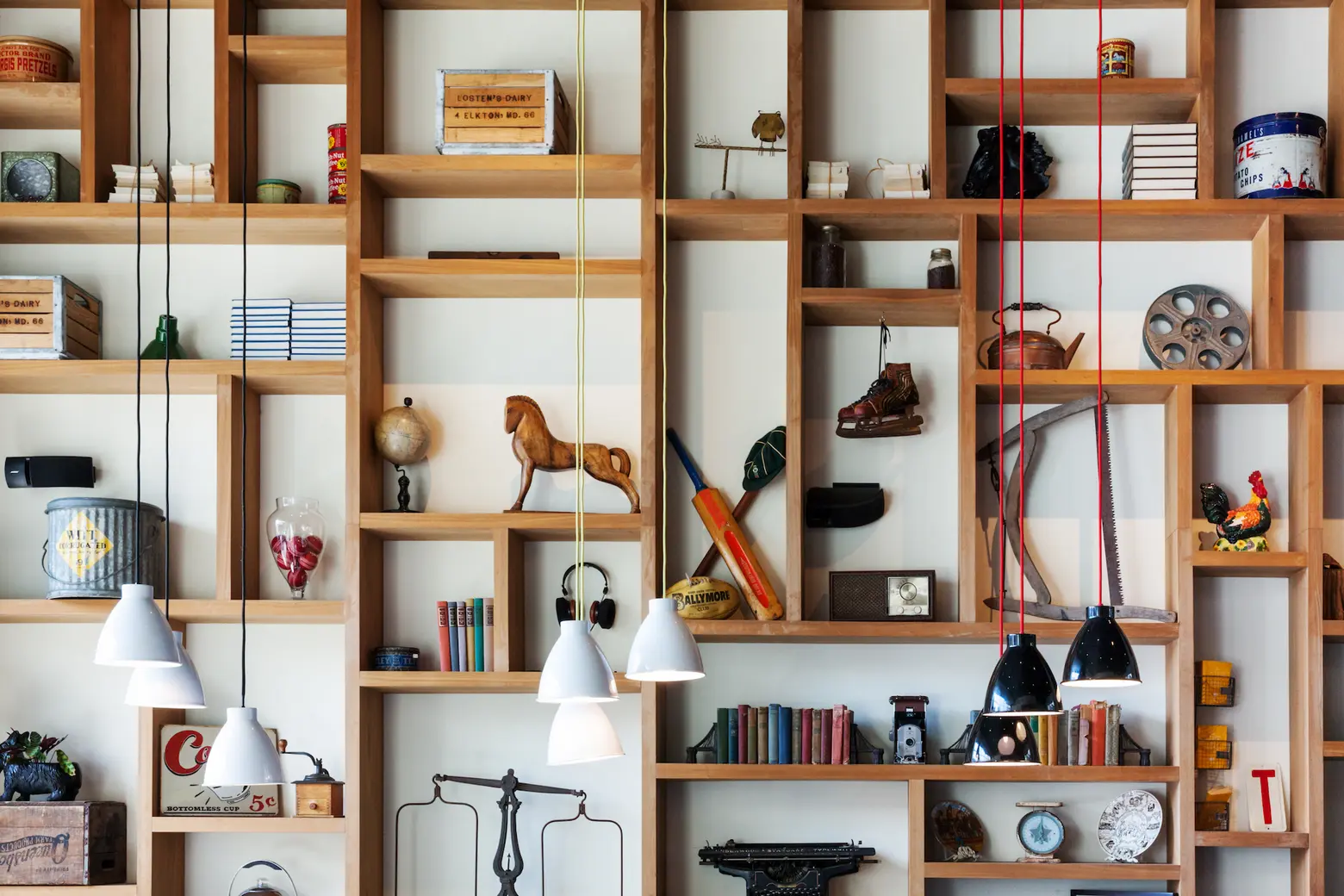
Your shelves in the Williamsburg café really stand out. How and where did you find all of these interesting items?
Amber: We went hunting all over the New York, Upstate and Philadelphia. They had a budget for each square of the shelf but found too many goodies so some of the items were freebies or taken from their own homes. There are a few street-finds too – you would be surprised at what some people throw out.
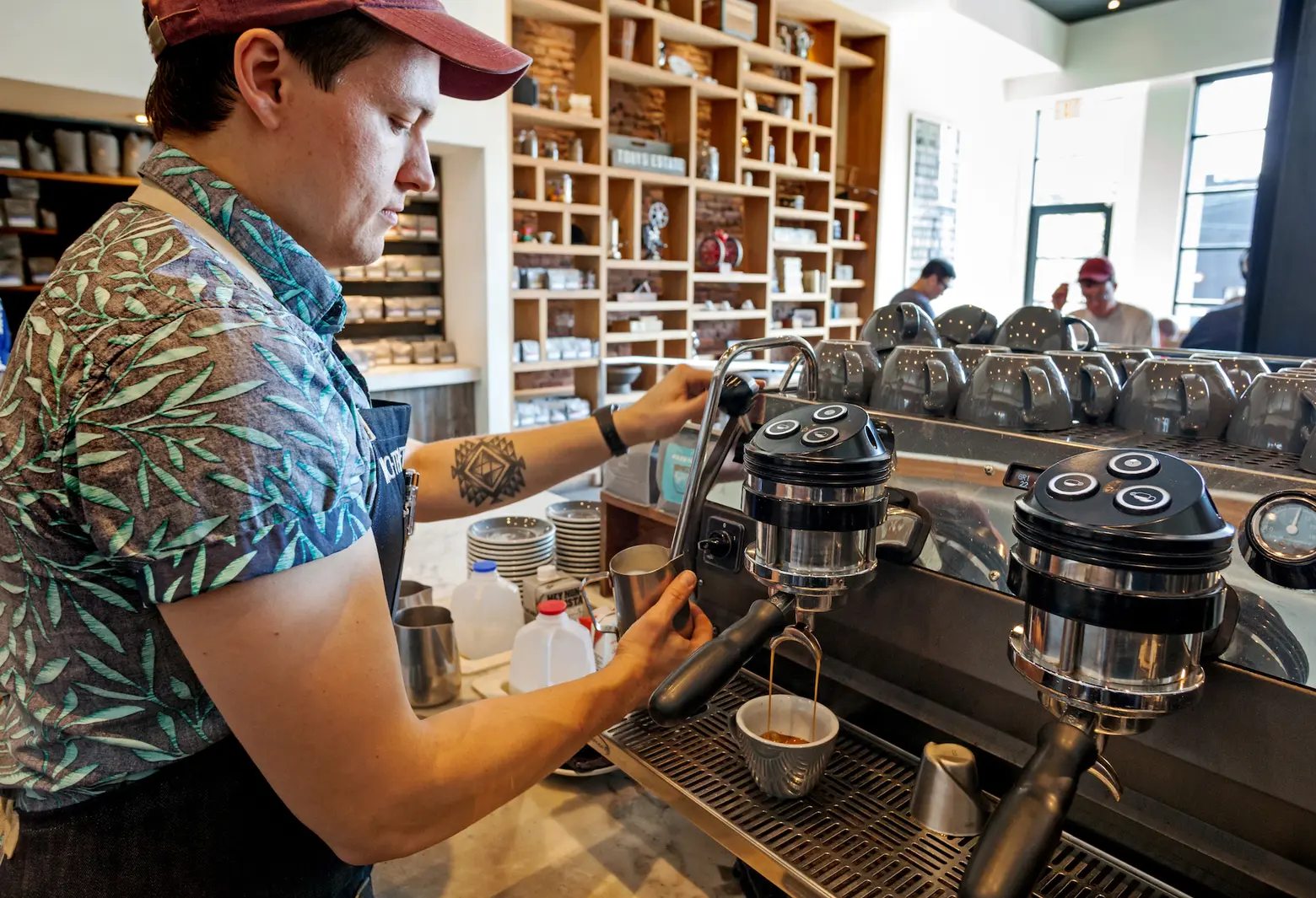
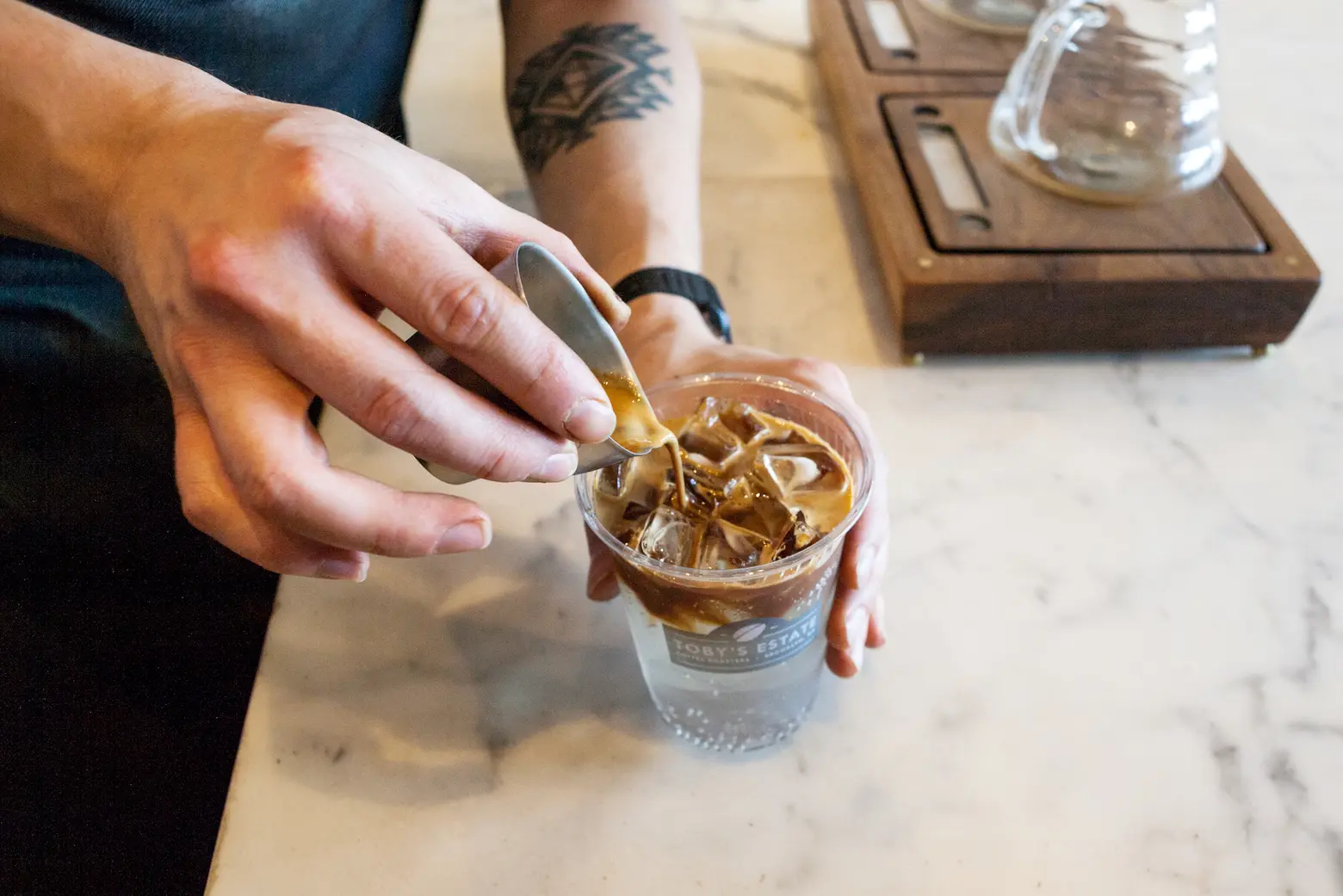
Making the Citron Espresso Tonic
Are there any new menu items coffee fans should be excited about?
Allie: Our Citron Espresso Tonic is a signature drink created with the Spring season in mind. It is a unique pairing of house-made Orange Blossom Syrup, a shot of our Bedford Espresso Blend, topped off with Boylan Heritage Tonic. We garnish with candied orange peel and the flavor is remarkable. It’s delicately floral with a refreshing acidity and soft sweetness.
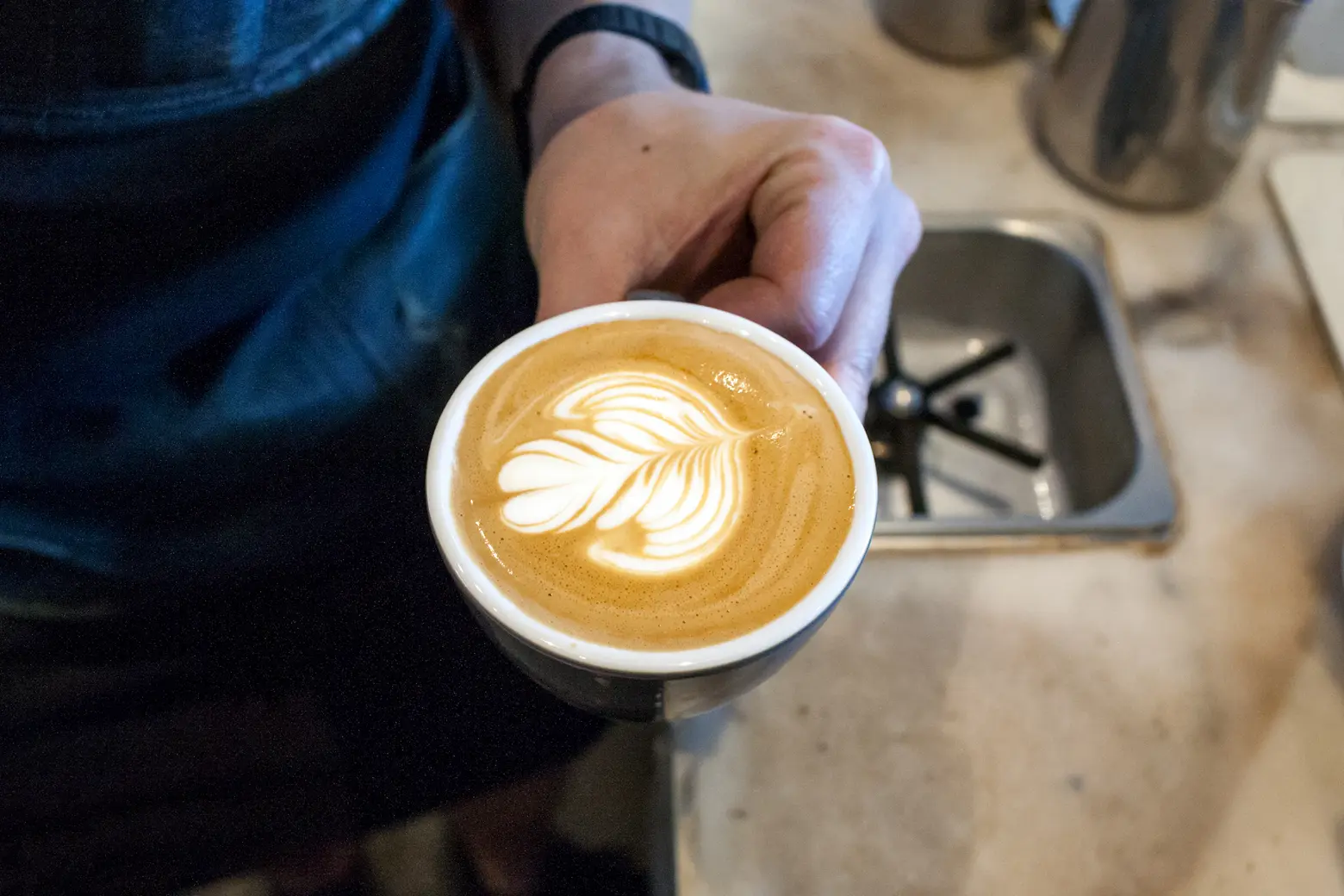
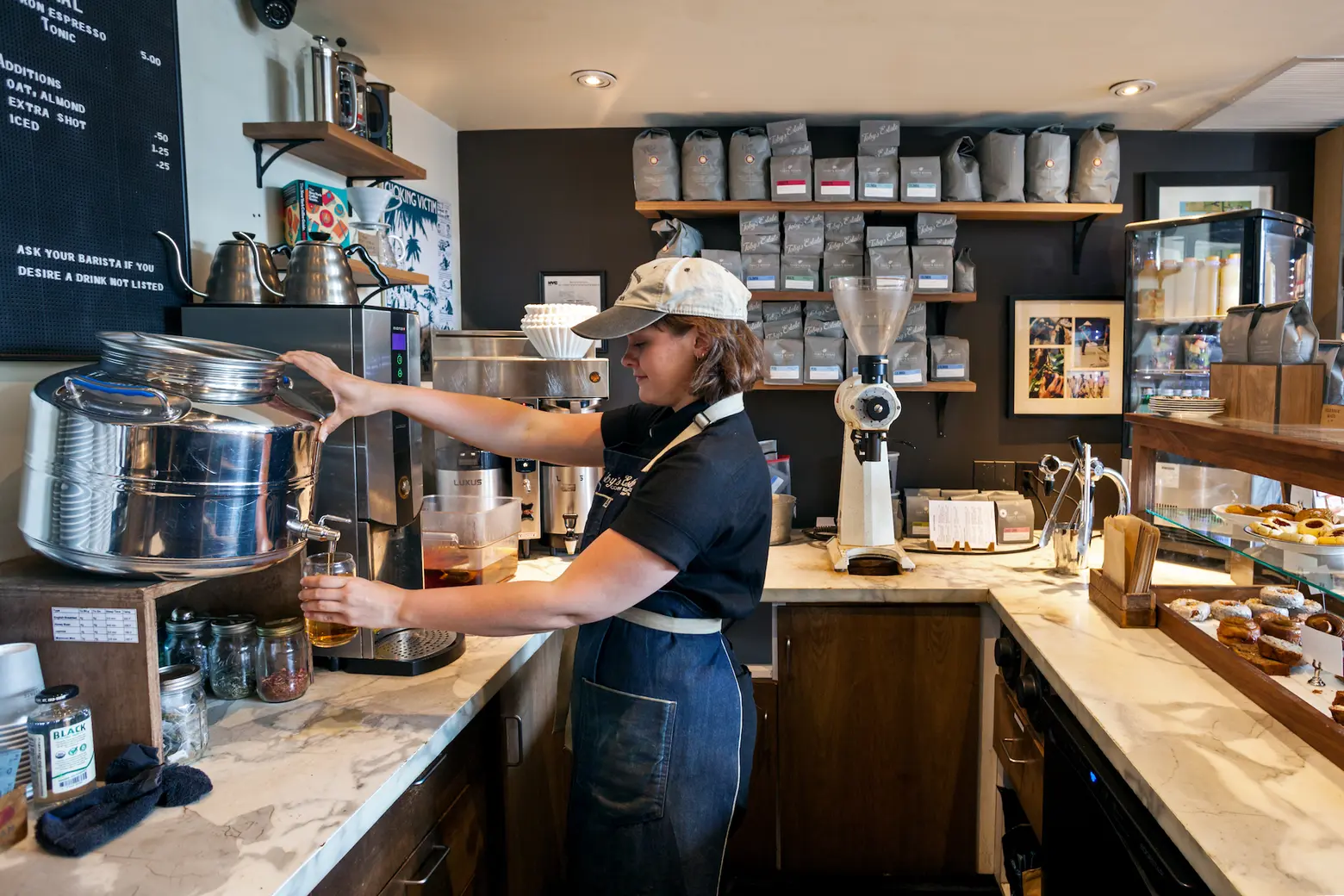
What type of Toby’s roast would you suggest a new coffee drinker try?
Allie: A personal favorite is El Ramo, which translates to ‘bouquet’ in Spanish, this perennial offering is an amazing example of thoughtful sourcing of beautiful coffees from Colombia. It is exceptionally sweet and approachable with notes of milk chocolate and ripe peaches and remains a wonderfully sophisticated option for new coffee drinkers exploring new flavors.
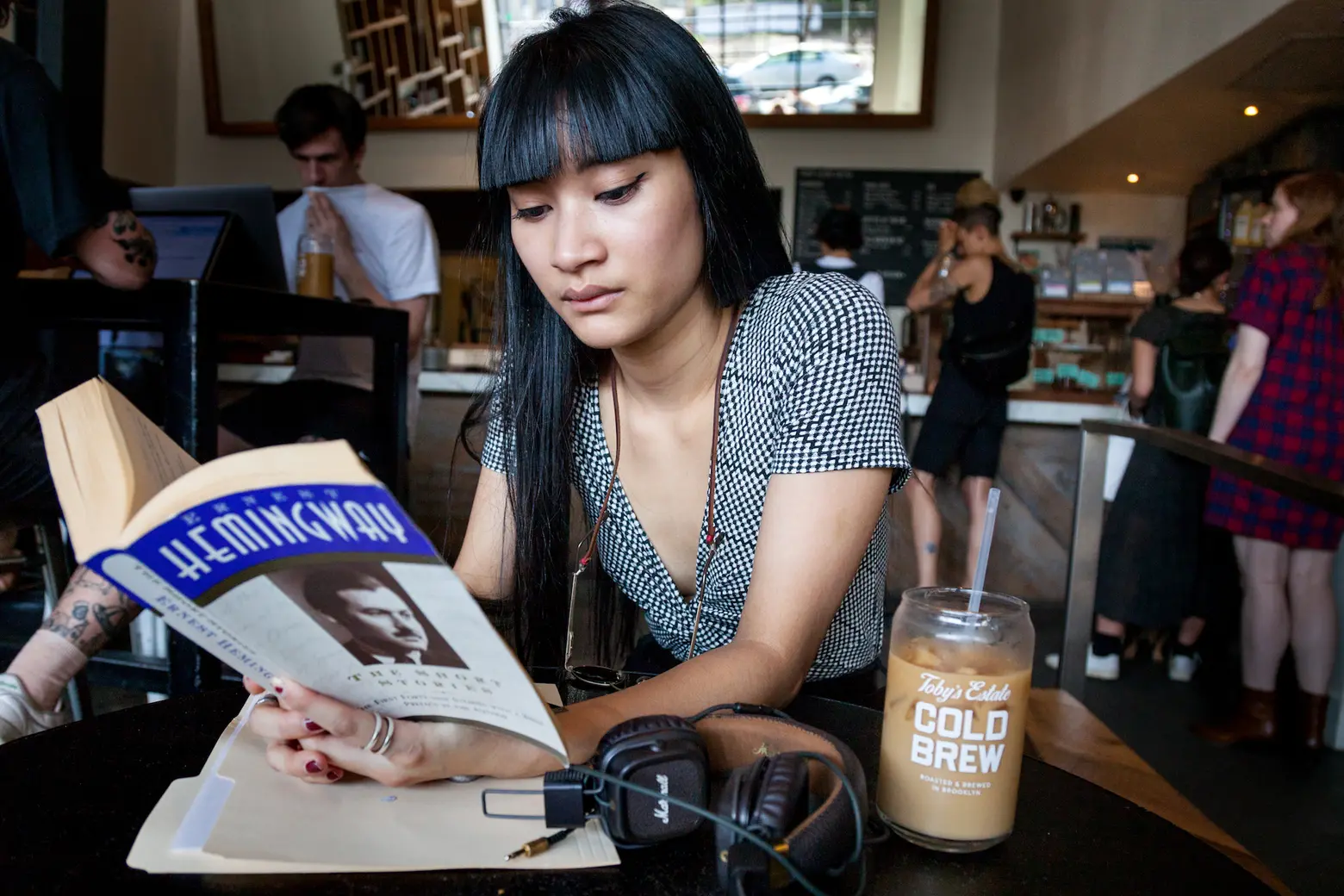
What’s next for Toby’s? Any new stores opening in NYC soon?
Not at this time. We are focusing on consistently making great coffee so we can sell and share more of it.
+++
RELATED:
- Where I Work: Tour FXCollaborative’s Flatiron architecture office with partner Dan Kaplan
- Where I Work: Inside C.O. Bigelow Apothecaries in the Village, the oldest pharmacy in the country
- Adriana Urbina brings Venezuelan flavors to Nolita’s De Maria while empowering female chefs
All photos taken by James and Karla Murray exclusively for 6sqft. Photos are not to be reproduced without written permission from 6sqft.
